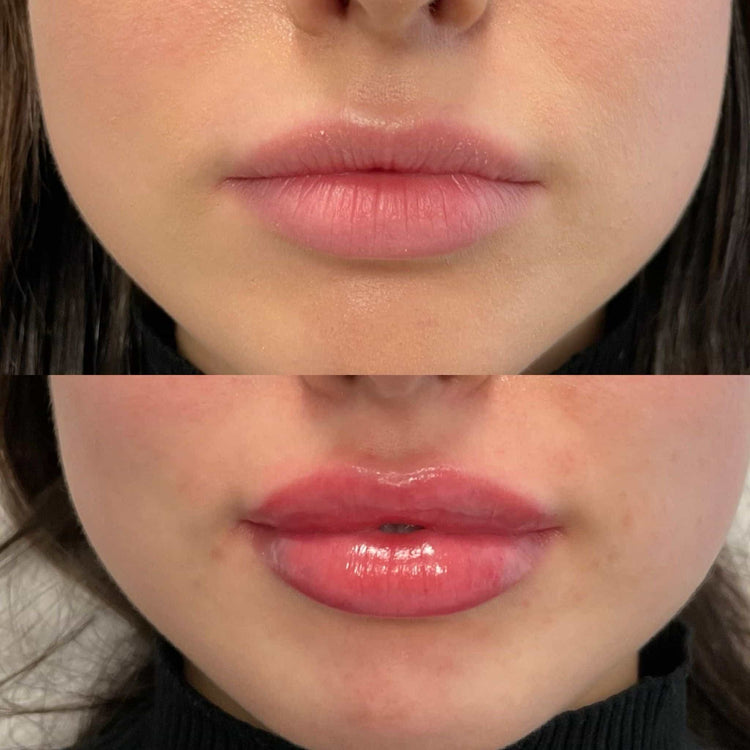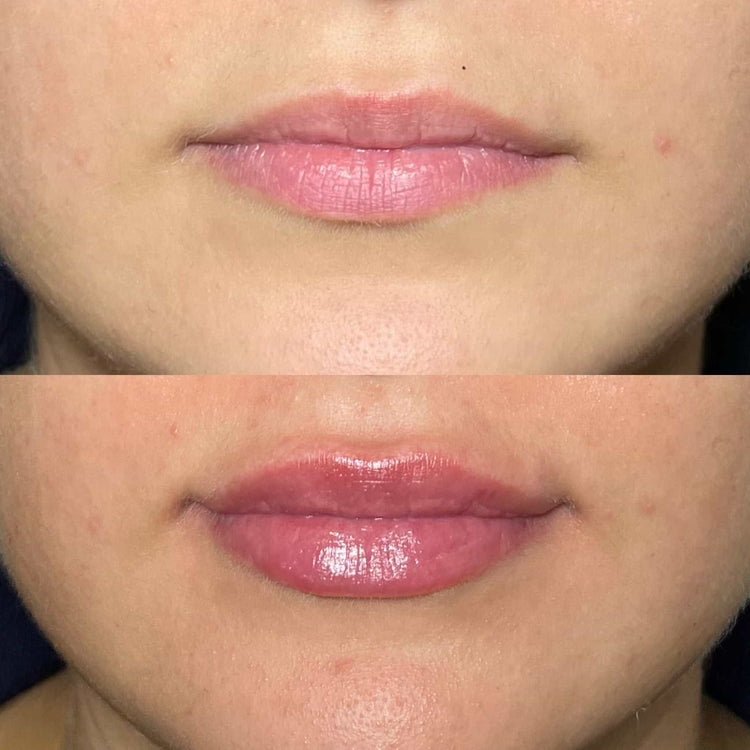How Dermal Fillers Work
Dermal fillers are a popular non-surgical treatment for reducing the appearance of fine lines and wrinkles. These injectable substances, often composed of hyaluronic acid or other synthetic materials, work by plumping up the skin and smoothing out wrinkles from the inside out. By adding volume to areas that have lost it due to aging, dermal fillers can restore a more youthful and refreshed look.
Mechanism of Action
Dermal fillers address fine lines and wrinkles by replenishing the volume that is naturally lost as we age. Over time, the skin’s collagen and elastin fibers break down, leading to decreased elasticity and the formation of wrinkles. Hyaluronic acid, a naturally occurring substance in the body, acts like a sponge by attracting and holding water molecules, contributing to skin hydration and plumpness.
When injected into the skin, dermal fillers containing hyaluronic acid or similar substances act as a scaffold, filling in the space beneath wrinkles and smoothing out their appearance. The filler attracts water molecules from the surrounding tissue, further enhancing volume and hydration. This results in a more youthful and smoother complexion.
Types of Hyaluronic Acid Fillers
Dermal fillers are a popular non-surgical treatment for reducing the appearance of fine lines and wrinkles. These injectable substances, often composed of hyaluronic acid or other synthetic materials, work by plumping up the skin and smoothing out wrinkles from the inside out. By adding volume to areas that have lost it due to aging, dermal fillers can restore a more youthful and refreshed look.
Dermal fillers address fine lines and wrinkles by replenishing the volume that is naturally lost as we age. Over time, the skin’s collagen and elastin fibers break down, leading to decreased elasticity and the formation of wrinkles. Hyaluronic acid, a naturally occurring substance in the body, acts like a sponge by attracting and holding water molecules, contributing to skin hydration and plumpness.
When injected into the skin, dermal fillers containing hyaluronic acid or similar substances act as a scaffold, filling in the space beneath wrinkles and smoothing out their appearance. The filler attracts water molecules from the surrounding tissue, further enhancing volume and hydration. This results in a more youthful and smoother complexion.
There are various types of hyaluronic acid fillers available, each with unique properties tailored for specific concerns. Some common types include:
Hyaluronic Acid Fillers: These are the most popular type of dermal filler, known for their hydrating and volumizing effects. They are used to address a wide range of concerns, from fine lines and wrinkles to deeper folds and volume loss in areas like cheeks, lips, and jawline.
Poly-L-Lactic Acid (PLLA) Fillers: These fillers stimulate collagen production over time, providing long-lasting results. They are often used for addressing moderate to severe wrinkles and facial contouring.
Calcium Hydroxylapatite (CaHA) Fillers: These fillers provide immediate volume and support to the skin. They are particularly effective for treating deep lines and folds around the mouth and nose.
Benefits of Using Dermal Fillers for Fine Lines and Wrinkles
Dermal fillers offer a non-surgical solution for addressing fine lines and wrinkles, restoring a more youthful appearance. These injectable substances work by replenishing lost volume beneath the skin’s surface, smoothing out wrinkles and enhancing hydration. Hyaluronic acid, a naturally occurring component of the skin, is commonly used as a dermal filler due to its ability to attract and retain water, plumping up the skin and reducing the visibility of fine lines.
Reduction in Appearance of Facial Lines
Dermal fillers are a popular non-surgical treatment for reducing the appearance of fine lines and wrinkles. These injectable substances, often composed of hyaluronic acid or other synthetic materials, work by plumping up the skin and smoothing out wrinkles from the inside out.
Dermal fillers address fine lines and wrinkles by replenishing the volume that is naturally lost as we age. Over time, the skin’s collagen and elastin fibers break down, leading to decreased elasticity and the formation of wrinkles. Hyaluronic acid, a naturally occurring substance in the body, acts like a sponge by attracting and holding water molecules, contributing to skin hydration and plumpness.
When injected into the skin, dermal fillers containing hyaluronic acid or similar substances act as a scaffold, filling in the space beneath wrinkles and smoothing out their appearance. The filler attracts water molecules from the surrounding tissue, further enhancing volume and hydration. This results in a more youthful and smoother complexion.
Improved Skin Texture
Dermal fillers are a popular non-surgical treatment for reducing the appearance of fine lines and wrinkles. These injectable substances, often composed of hyaluronic acid or other synthetic materials, work by plumping up the skin and smoothing out wrinkles from the inside out.
Dermal fillers address fine lines and wrinkles by replenishing the volume that is naturally lost as we age. Over time, the skin’s collagen and elastin fibers break down, leading to decreased elasticity and the formation of wrinkles. Hyaluronic acid, a naturally occurring substance in the body, acts like a sponge by attracting and holding water molecules, contributing to skin hydration and plumpness.
When injected into the skin, dermal fillers containing hyaluronic acid or similar substances act as a scaffold, filling in the space beneath wrinkles and smoothing out their appearance. The filler attracts water molecules from the surrounding tissue, further enhancing volume and hydration. This results in a more youthful and smoother complexion.
Minimal Downtime
Dermal fillers offer a minimally invasive approach to addressing fine lines and wrinkles, resulting in less downtime compared to surgical procedures.
The injection process itself is relatively quick, typically taking only minutes to complete. Most individuals can return to their normal activities immediately afterward with minimal discomfort.
While some mild swelling or bruising might occur at the injection site, these side effects usually subside within a few days.

The Procedure for Dermal Filler Injection
Dermal fillers have become a popular choice for addressing fine lines and wrinkles, providing a non-surgical solution to restore a youthful appearance. These injectable substances work by replenishing volume lost as we age, smoothing out wrinkles from the inside out.
Consultation and Assessment
Dermal fillers are a popular non-surgical treatment for reducing the appearance of fine lines and wrinkles.
These injectable substances, often composed of hyaluronic acid or other synthetic materials, work by plumping up the skin and smoothing out wrinkles from the inside out. By adding volume to areas that have lost it due to aging, dermal fillers can restore a more youthful and refreshed look.
Dermal fillers address fine lines and wrinkles by replenishing the volume that is naturally lost as we age. Over time, the skin’s collagen and elastin fibers break down, leading to decreased elasticity and the formation of wrinkles. Hyaluronic acid, a naturally occurring substance in the body, acts like a sponge by attracting and holding water molecules, contributing to skin hydration and plumpness.
When injected into the skin, dermal fillers containing hyaluronic acid or similar substances act as a scaffold, filling in the space beneath wrinkles and smoothing out their appearance. The filler attracts water molecules from the surrounding tissue, further enhancing volume and hydration. This results in a more youthful and smoother complexion.
Injection Process
Dermal fillers are injected into specific areas of the skin using a fine needle. A topical anesthetic is typically applied beforehand to minimize any discomfort during the procedure.
The injector will carefully insert the needle, depositing small amounts of dermal filler beneath the wrinkles or creases.
The amount of filler used will vary depending on the individual’s needs and the severity of the wrinkles.
After the injections are complete, a gentle massage may be performed to ensure even distribution of the filler.
The entire procedure usually takes around 30 minutes or less.
Post-Procedure Care Instructions
Dermal fillers are injected into specific areas of the skin using a fine needle. A topical anesthetic is typically applied beforehand to minimize any discomfort during the procedure.
The injector will carefully insert the needle, depositing small amounts of dermal filler beneath the wrinkles or creases.
The amount of filler used will vary depending on the individual’s needs and the severity of the wrinkles.

After the injections are complete, a gentle massage may be performed to ensure even distribution of the filler.
The entire procedure usually takes around 30 minutes or less.
Following a dermal filler treatment, it is important to follow certain post-procedure care instructions to optimize results and minimize any potential complications.
Here are some key post-procedure care tips:
Avoid touching or rubbing the treated area: This can disrupt the filler placement and cause swelling or bruising.
Apply ice packs: Applying ice packs to the injection sites for 10-15 minutes at a time, several times a day, can help reduce swelling and inflammation.
**Elevate your head: Sleeping with your head elevated can minimize fluid buildup around the treated area.
**Avoid strenuous activity:** Avoid intense exercise or activities that cause sweating for at least 24 hours following the treatment.
Stay hydrated: Drinking plenty of water helps to promote healing and skin hydration.
**Protect your skin from the sun: Wear sunscreen with an SPF of 30 or higher daily, even on cloudy days, as UV exposure can affect filler results.
Attend follow-up appointments: Your injector will schedule a follow-up appointment to assess your progress and ensure that you are healing well.

It’s essential to follow these instructions carefully to ensure optimal results and minimize the risk of any complications.
Risks and Side Effects Associated with Dermal Fillers
While dermal fillers offer a non-surgical approach to addressing fine lines and wrinkles, it’s important to be aware of potential risks and side effects. These can range from mild temporary reactions like redness, swelling, bruising, or tenderness at the injection site to more serious complications such as infection, allergic reactions, or uneven filler distribution.
Common Side Effects
Common side effects associated with dermal fillers are usually mild and temporary.
They may include:
- Redness and inflammation at the injection site
- Swelling
- Bruising
- Tenderness or pain
- Lumps or bumps
Most of these side effects resolve within a few days to a week.
In rare cases, more serious complications can occur, such as:
- Infection
- Allergic reaction
- Vascular occlusion (blockage of blood vessels)
- Asymmetry or uneven filler distribution
It’s crucial to choose a qualified and experienced injector who uses safe and sterile procedures to minimize the risk of complications.
Serious Complications
While dermal fillers offer a non-surgical approach to addressing fine lines and wrinkles, it’s important to be aware of potential risks and side effects. These can range from mild temporary reactions like redness, swelling, bruising, or tenderness at the injection site to more serious complications such as infection, allergic reactions, or uneven filler distribution.
Common side effects associated with dermal fillers are usually mild and temporary. They may include:
- Redness and inflammation at the injection site
- Swelling
- Bruising
- Tenderness or pain
- Lumps or bumps
Most of these side effects resolve within a few days to a week.
In rare cases, more serious complications can occur, such as:
- Infection
- Allergic reaction
- Vascular occlusion (blockage of blood vessels)
- Asymmetry or uneven filler distribution
It’s crucial to choose a qualified and experienced injector who uses safe and sterile procedures to minimize the risk of complications.
Choosing the Right Dermal Filler and Practitioner
Choosing the right dermal filler and practitioner is essential for achieving desired results and minimizing potential risks. When selecting a filler, consider your individual needs, concerns, and desired outcomes. Different types of fillers are formulated with varying properties and are suited for different areas of the face. Consult with a qualified and experienced injector to determine the most appropriate filler for you.
Factors to Consider When Selecting a Filler
When choosing dermal fillers, factors like your skin type, desired outcome, and budget should be considered. It’s important to understand the different types of fillers available and their unique properties. For example, hyaluronic acid fillers are commonly used for addressing wrinkles and adding volume, while poly-L-lactic acid (PLLA) fillers stimulate collagen production for long-lasting results.
Finding a qualified and experienced practitioner is crucial. Look for board-certified plastic surgeons or dermatologists with extensive experience in administering dermal fillers. Ask to see before-and-after photos of their previous patients and inquire about their training and safety protocols.
During your consultation, discuss your goals openly and honestly with the injector. They should listen attentively to your concerns and provide you with a personalized treatment plan.
Don’t hesitate to ask questions about the chosen filler, the procedure itself, potential risks and side effects, and the expected results.
Choosing a reputable clinic or medical spa that prioritizes safety and patient satisfaction is also important. Ensure they have a clean and hygienic environment and adhere to strict sterilization practices.
Importance of Choosing a Qualified Practitioner
Choosing the right dermal filler and practitioner is essential for achieving desired results and minimizing potential risks. When selecting a filler, consider your individual needs, concerns, and desired outcomes. Different types of fillers are formulated with varying properties and are suited for different areas of the face.
Finding a qualified and experienced practitioner is crucial. Look for board-certified plastic surgeons or dermatologists with extensive experience in administering dermal fillers. Ask to see before-and-after photos of their previous patients and inquire about their training and safety protocols.
During your consultation, discuss your goals openly and honestly with the injector. They should listen attentively to your concerns and provide you with a personalized treatment plan.
Don’t hesitate to ask questions about the chosen filler, the procedure itself, potential risks and side effects, and the expected results.
Choosing a reputable clinic or medical spa that prioritizes safety and patient satisfaction is also important. Ensure they have a clean and hygienic environment and adhere to strict sterilization practices.
Maintenance and Longevity of Results
While dermal fillers offer a non-surgical approach to addressing fine lines and wrinkles, it’s important to understand their longevity. Results from dermal filler injections typically last between six months to two years, depending on the type of filler used, individual metabolism, and lifestyle factors such as sun exposure and smoking.
Over time, the body naturally breaks down the filler substance, causing the treated areas to gradually return to their original appearance. To maintain the desired results, repeat treatments will be necessary. The frequency of follow-up injections can vary based on individual needs and the longevity of the specific filler used.
Repeat Treatments
Dermal fillers are a popular non-surgical treatment for reducing the appearance of fine lines and wrinkles. These injectable substances, often composed of hyaluronic acid or other synthetic materials, work by plumping up the skin and smoothing out wrinkles from the inside out. By adding volume to areas that have lost it due to aging, dermal fillers can restore a more youthful and refreshed look.
Dermal fillers address fine lines and wrinkles by replenishing the volume that is naturally lost as we age. Over time, the skin’s collagen and elastin fibers break down, leading to decreased elasticity and the formation of wrinkles. Hyaluronic acid, a naturally occurring substance in the body, acts like a sponge by attracting and holding water molecules, contributing to skin hydration and plumpness.
When injected into the skin, dermal fillers containing hyaluronic acid or similar substances act as a scaffold, filling in the space beneath wrinkles and smoothing out their appearance. The filler attracts water molecules from the surrounding tissue, further enhancing volume and hydration. This results in a more youthful and smoother complexion.
Repeat treatments are typically necessary to maintain the desired results.
- Frequency of Treatments: The frequency of repeat treatments will vary depending on several factors, including:
- • **Type of filler used:** Different fillers have varying lifespans. For example, some hyaluronic acid fillers may last for 6-12 months, while others can provide results for up to 2 years.
- • **Individual metabolism and lifestyle: Factors like age, skin type, sun exposure, smoking habits, and collagen production rate can influence how long the filler lasts.
- • **Treatment area:** Fillers used in areas with more movement (such as the smile lines around the mouth) may break down faster than those used in areas with less motion.
Your injector will be able to assess your individual needs and recommend a personalized treatment plan, including the frequency of repeat injections required to maintain optimal results.
Lifespan of Fillers
Dermal fillers can last anywhere from six months to two years, depending on factors like the type of filler used, individual metabolism, lifestyle, and the treated area.
Hyaluronic acid fillers tend to have a shorter lifespan (around 6-18 months), while fillers containing calcium hydroxylapatite or poly-L-lactic acid (PLLA) may last longer (up to two years). Repeat treatments are needed to maintain the results as the body naturally breaks down the filler over time.
During your consultation with a qualified injector, they will assess your individual needs and recommend a suitable treatment plan, including how often you’ll need follow-up injections.
Enquire about dermal fillers for smoother, plumper lips at It’s Me & You Clinic
